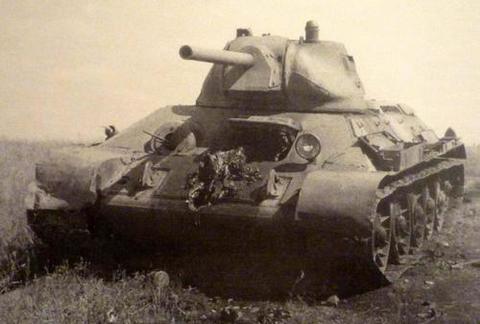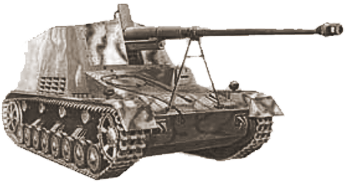Sixth Army's Flanks Outside Stalingrad: The Red Army's Second Through Fourth Kotluban Offensives

Last month I began an in-depth look at what was happening outside Stalingrad while what has become one of the most remembered battles of the Second World War was waged in the streets and ruins of the city. I started with a look at the Soviet Stalingrad Front's First Kotluban Offensive during the first week of September 1942. This offensive was directed against the German Sixth Army's VIII Army Corps (384th and 76th Infantry Divisions) and XIV Panzer Corps (the 16th Panzer Division and 3rd and 60th Motorized Divisions) .
Most commentators like to point out that the attack failed miserably. In human terms, it did. The Stalingrad Front lost as many as 80,000 of it's spearhead army's combined 250,000 men and 300 of 400 tanks thrown into the attack. Nevertheless, the offensive had a measurable impact on events unfolding within Stalingrad at a time when the Soviet force most directly responsible for defending the city, the 62nd Army, was reeling. In addition, Stalingrad's critical factory district, running along the Volga River, was at that time quite vulnerable to a concentrated attack from the XIV Panzer Corps - an attack that never materialized in any real strength in large part because the XIV Panzer Corps was fighting to hold it's northern flank. Though the Stalingrad Front paid a heavy price for assissting the 62nd Army's defensive effort, such was the pressure the German Sixth Army brought to bear against Chuikov's command that the Soviet army's opposing Sixth Army's northwestern flank would be ordered to attack four more times during September and October of 1942.
The Second Kotluban offensive, which lasted from September 18 to October 2, 1942, had been ordered by Zhukov to again seek to penetrate the Sixth Army's northwestern flank. This time however, Eremenko, commanding Stalingrad Front, shifted the main axis of attack away from the XIV Panzer Corps (which had borne the brunt of the first two Soviet attacks in the region during late August and early September) and to the boundary of XIV Panzer Corps and VIII Corps - positions held mostly by German infantry and not armored heavy units. Though this made sense, the terrain was still far from conducive to offensive operations with the open steppe providing no cover for the attacking Soviet shock groups.
As to the Soviet spearhead, once again Moskalenko's 1st Guards Army would lead Stalingrad Front's offensive.1st Guards Army was a very different army than it had been just a weeks prior, having swapped rifle divisions with the Soviet 24th Army. In addition, the 1st Guards Army had received four fresh rifle divisions from Stavka's reserve while retaining the 4th, 7th, and 16th Tank Corps (243 tanks in total as none of the three tank corps had recovered from the bloodletting of a fortnight prior). With all these changes 1st Guards Army remained potent on paper; fielding 123,000 men, 611 guns, 1,956 mortars, and 340 armored vehicles in total (with 185 of these AFV's T-34 medium or KV heavy tanks). The German defender's opposite Moskalenko's command were outnumbered 6:1 in manpower and 5:1 in tanks. However, they were deeply entrenched in strong defensive positions; plus held the advantage in air support. The Soviet offensive began on the morning of September 18th with an artillery barrage that missed just about everything of value and a drive that went nowhere in the face of concentrated and interlocking defensive fire from German artillery, mortars, and machine guns. It was a bloodbath. In just two days the 1st Guards Army suffered 36,000 casualties (the supporting Soviet 24th and 66th Army's suffered a combined 52,000 casualties as well) and lost half its tanks (see attached picture of a knocked out T-34).
Zhukov and Eremenko shifted the main shock grouping further west but strong German counter-attacks, airpower, and the presence of 16th Panzer Division's armor, meant that by September 27th the 1st Guards Army couldn't even field 100 tanks. The offensive sputtered out shortly thereafter. Though Soviet casualties were God-awful, there once again was a silver lining from the Red Army's perspective. Sixth Army's XIV Panzer Corps had been forced to divert forces away from the struggle in Stalingrad's northern suburbs and the city itself. In addition, the German 76th Infantry Division, which had faced the worst of 1st Guards Army's assault, was so beaten up Paulus was forced to replace it with the strong 113th Infantry Division which had otherwise been tagged for deployment into the city with what doubtessly would have been deleterious effects for Chuikov's 62nd Army.
Meanwhile, on September 28th Stavka redesignated the Stalingrad Front northwest of the city as the Don Front and recast the Southeastern Front as the Stalingrad Front. More importantly, the new Don Front commander would be Lieutenant General K.K. Rokossovksy with Eremenko moving over to command the new Stalingrad Front along the Volga River. In addition, Stavka poured in the reinforcements, with Don Front getting seven new rifle divisions as well as a plethora of lesser formations all very much needed for the third Kotluban offensive. On 9th October the Don Front's attack began. Though the offensive was conducted immediately following assaults launched by Eremenko's Stalingrad Front southeast of the city of Stalingrad, the lack of time between the end of the Second Kotluban offensive and Third meant that Don Front's overworked 1st Guards and 24th Army's were too exhausted to accomplish anything of significance. The attack ran out of steam out by October 11th, having done little other than to give Paulus additional headaches regarding Sixth Army's flanks at the same time Hitler was pressuring him to finish off Chuikov's resilient 62nd Army.
It was not until October 19th that the Don Front was able to launch a new attack against Sixth Army's flank. This Fourth Kotluban offensive was a rushed affair prompted by the Sixth Army's mid-month success in penetrating into Stalingrad's factory district and coming dangerously close to unhinging Chuikov's defenses. In addition, Stalin had also ordered Stalingrad Front to attack south of the city to provide further assistance to Chuikov's heavily pressured army. Rokossovsky this time selected his 66th and 24th Army's to lead his attack.
Though 66th Army had received four fresh rifle divisions from Stavka reserves and could count on the support from three full-strength tank brigades (with 53 tanks in each brigade) the Soviet shock groupings would be attacking into the teeth of XIV Panzer Corps stout defenses northwest of Orlovka (one of Stalingrad's northen suburbs). Moreover, Stalin did not give Rokossovsky adequate time to prepare even though he was to attack two motorized and one panzer division. The results were predictable. Don Front's offensive ground to a halt within days, having accomplished next to nothing. Meanwhile, Eremenko launched another offensive south of Stalingrad (that and a companion assault southeast of the city are discussed in a follow-up article) and Paulus inexorably pushed 62nd Army into a diminishing strip of land amidst the ruins of Stalingrad's factory district.



Post new comment